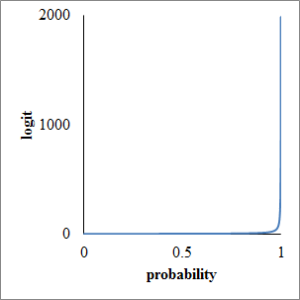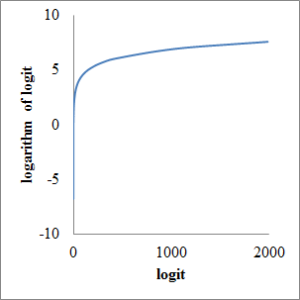In this article, I’d like to introduce food composition tables in the world with on-line web-site. I’m happy if you share more information about other site with me.
- Northern Europe
- Western Europe
- Belgium
- Denmark
- Netherlands
- France
- Germany
- Switzerland
- Iceland
- United Kingdom
- Eastern Europe
- Czech Republic
- Estonia
- Poland
- Serbia
- Slovakia
- Southern Europe
- Greece
- Italy
- Portugal
- Spain
- Middle East, Africa
- Bahrain
- Israel
- Middle/Near East
- Mozambique
- South Africa
- Turkey
- West Africa
- North America, South America
- Canada
- USA
- Brazil
- Latin America
- Oceania
- Australia
- New Zealand
- Pacific Islands
- Asia
- China
- Malaysia
- Singapore
- Japan
- Thailand
- Vietnam
Finland
THL
Foods greater than 3400, 54 components. I couldn’t download data file. Rich link forward other country’s food composition tables.
Norway
The Norwegian Food Composition Table
13 food groups, 1305 foods and 36 components. It’s available for download.
Sweden
NFA Food Composition Database
Click “Search nutrient content in food” button below page, click icon of EXCEL and you can download csv file. Great!
Belgium
NUBEL
1200 foods and 32 components. You need to pay for data.
Denmark
Danish Food Composition Databank
You can download all data with Microsoft Access 2000 or Microsoft EXCEL version 5.0.
Netherlands
NEVO online
Or they would post you EXCEL file with all data if you send form from Request dataset.
France
French food composition table Table Ciqual 2012
You can download from this site csv file or mdb file.
Germany
MRI
Approximately 10,000 foods and 137 components. Read license agreement. Or you can use the Souci Fachmann Kraut Online Database. 800 foods and 260 components. Trial period is 30 days.
Switzerland
Swiss Food Composition Database
13 food groups, 1109 foods and 38 components. Click “Downloads” in left column to download xlsx file.
Iceland
ISGEM
The food composition table of Iceland, provided by MATÍS, seems to be similar to Japanese Food Composition Table. Provided PDF files for each food groups, with protection by password security, respectively. It seems to be 17 food groups.
Or you can purchase at EuroFIR with 15 euros if you visit University College Cork.
United Kingdom
McCance and Widdowson’s The Composition of Foods integrated dataset
Click “Related links” in the middle of page and you can download EXCEL file with 11 MB size and 16 sheets. 13 food groups and 3423 foods.
Czech Republic
Czech Food Composition Database, Version 2.11
13 food groups. You can’t download data file, but reference list is substantial. For example, “McCance and Widdowson’s The Composition of Foods integrated dataset (CoF IDS)” of UK, or “the Ciqual 2012 Table” of France.
Estonia
NutriData – Estonian food composition database
72 foods and 59 components.
Poland
National Food and Nutrition Institute
Click orange link in right column. 3 steps access level, you need to pay for all 932 foods data and they post EXCEL file in CD-ROM!
Serbia
Department of Nutritional Research (DNR)
You seem to need to log-in and search with Serbia food composition table. But I couldn’t find registration form.
Slovakia
Slovak Food Composition Data Bank (SFCDB)
1419 foods and 52 components.
Greece
COMPOSITION TABLES OF FOODS AND GREEK DISHES
It’s amusing to view Greece food composition table. Instead of citing in the references like Finland, it’s described that they have referred to UK food composition table on site top.
Italy
Tabelle di composizione degli alimenti
Food composition table of Italy has 935 foods, 70 % of them is cited from Europian Institute of Oncology, 30 % is independent survey. GO to Data Search/By Food Group in left column, then you can view all data. Published in 1998 and 2008.
Portugal
TABELA DA COMPOSIÇÃO DE ALIMENTOS
14 food groups and 962 foods. I couldn’t download all data.
Spain
Base de Datos Española de Composición de Alimentos
I have been warned on above page by Google Chrome that security certificate is not trusted. You can enter from “Consulta/Query” on right above the page. 13 food groups, 998 foods and 43 components. I couldn’t download all data.
Bahrain
FOOD COMPOSITON TABLES FOR BAHRAIN
15 food groups and 34 components.
Israel
Ben Gurion University of the Negev
Ben Gurion University of the Negev provides service with simple interface. When you have downloaded “BGU recipe program”, mdb file of Microsoft Access, you could enter recipe in Hebrew and English.
Middle/Near East
food composition tables for the near east
14 food groups, 848 foods and 20 components.
Mozambique
Nutrition research in Mozambique
12 food groups, 410 foods and 35 components. You can download PDF file.
South Africa
South African Medical Research Council
Food composition table of South Africa has tangled link. 4th paragraph of analytical and bibliographic databases, South African Food composition database or Advanced Food composition database is target page. It seems that it had been available for download all data previously, but was not available recently.
Turkey
Turkish Food Composition Database
Turkish food composition database is beta version.
West Africa
Composition of Selected Foods from West Africa
It’s available for download PDF file with 13 food groups and 30 components.
Canada
Canadian Nutrient File (CNF), 2010
Canadian site is intelligent. It’s available for download data file and data structure is clear on the site, it seems to be easy to construct relational database.
USA
the Nutrient Data Laboratory
You can download food composition table of USA as Windows application. If you needed other type file, you could download from USDA National Nutrient Database for Standard Reference with 8.6 MB ASCII file or 21 MB Access file. ASCII file is compressed in zip format with text files and a PDF document, which describes file format and data structure after p26.
Brazil
Tabela de Brasileira de Composição de Alimentos
Food composition table of Brazil provides 1205 foods. It seems that you can’t download data file.
Latin America
Red Latinoamericana de Composición de Alimentos
17 food groups, 443 foods and 24 components. You can’t download data file, but you can view all data on site. This site has links to other Latin America countries.
Australia
NUTTAB 2010
Food composition table of Australia is easy to use and view all data, 19 food groups, 2190 foods and 196 components, with web browser. You can’t download data. You need to register.
New Zealand
New Zealand Food Composition Data for Nutrition Information Panel (NZFCD-NIP)
2700 foods and 7 major components. Windows application is available. It seems that you need to register.
Pacific Islands
The Pacific Islands food composition tables
20 food groups, 882 foods and 22 components. The table is available for download or viewing.
China
China Food Nutrition Network
22 food groups and 14 components. It’s heavy site and mainly written in Chinese.
Malaysia
Malaysian Foods Composition Database; //www.nutriweb.org.my/searchfood.php
Link to food composition table of Malaysia is broken.
Singapore
What’s Eating Singapore
Site of Health Promotion Board is advanced. There are 4 tools on “Health tools” at lower right corner of the page. Energy and Nutrient Composition of Food provides components of each food, Recipe Analysis calculates components of each dish and Food Intake Assessment assess weekly intake from your gender, age and body weight. It’s surprising that they have released smart phone application, BuUuk.
Japan
Report of the Subdivision on Resources The Council for Science and Technology Ministry of Education, Culture, sports, Science and Technology, JAPAN
18 food groups, 1878 foods and 50 components. It’s very difficult to use and convert to database. If you’d like to use immediately, it’s available in my blog, CSV file of the ‘Standard Tables of Food Composition in Japan 2010′.
Thailand
BUREAU OF NUTRITION
In Thailand, they seem to be sensitive to lack of iodine. They have food composition table about 13 food groups and usual 18 components, fatty acid and cholesterol and amino acid.
Vietnam
VIETNAMESE FOOD COMPOSITION TABLE
14 food groups, 526 foods and 86 components.
References:
Food composition databases
National Diet Library of Japan
DTU Food
International food composition table/database directory









